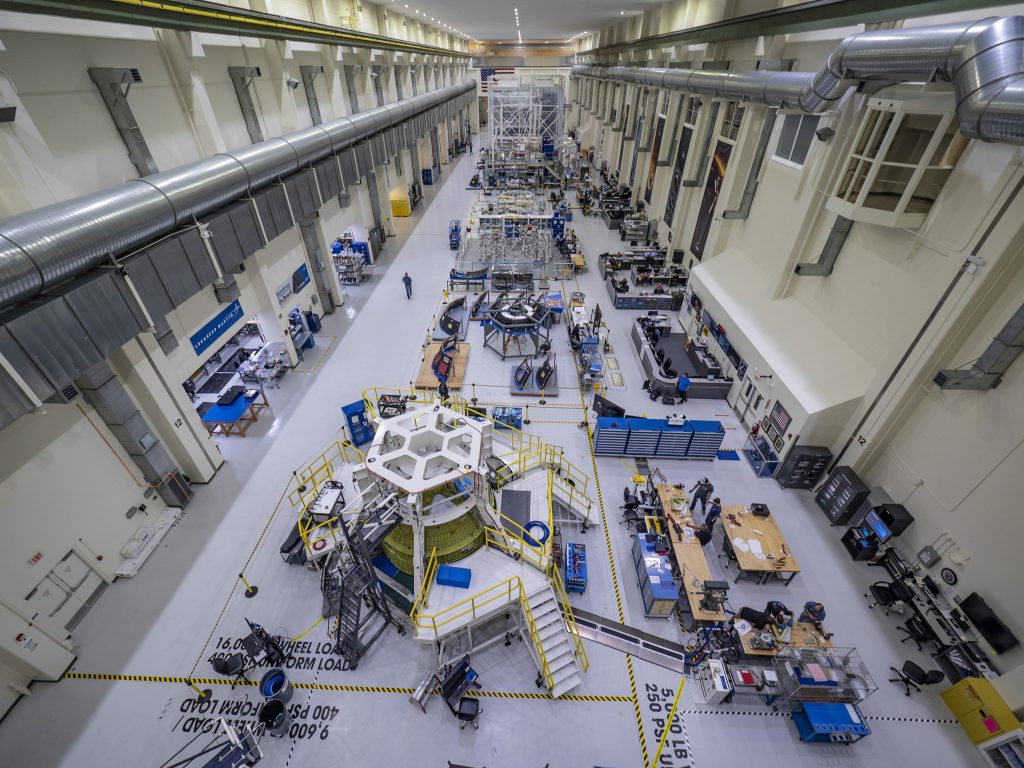Before the New Year at NASA’s Kennedy Space Center in Florida, USA, the final welds were finished that connect the European Service Module to the Crew Module Adapter. The two units are now one and form the Service Module.
Over 30 welds and 20 mechanical fittings were completed to mainly connect the pipes for propulsion and the Environmental, Control and Life Support Systems allowing for commands from the Crew Module to be carried out by the European Service Module.
The Service Module has already been moved from the welding work station to the main aisle in the Neil Armstrong Operations and Checkout building on an air-cushioned pallet. Blowing air continuously creates a thin air cushion that allows for smooth and easy handling of the Service Module. Air is piped underneath the Service Module and lifts it up so it can glide over the floor. The same technique is used to train astronauts on particularly complex spacewalks or for testing. Like an air hockey table, air-bearing platforms such as the one used to move the Service Module can glide freely across smooth floors, to simply and easily replicate the dynamics of low gravity motion in two rather than three dimensions.
Feeling the pressure
The Service Module then moved to the Proof Pressure Cell at the Operations and Checkout building where helium gas will be piped through the newly-welded joints at high pressure to test their effectiveness. If the welds do not leak under increased pressure then they are fit to fly and can withstand the forces the Service Module will endure during launch and its trip around the Moon.
Moving down the line
The pressure tests were wrapped up last week and the Service Module is continuing its trip down the Operations and Checkout building not unlike a factory assembly line. Next stop is the multifunction station where more components will be installed such as star trackers, cameras and antennas. More on this in later blog posts.


 Automated Transfer Vehicle page
Automated Transfer Vehicle page ATV blog archive
ATV blog archive
Discussion: no comments